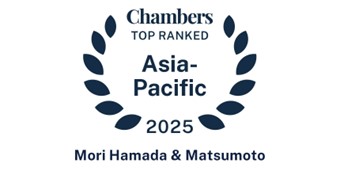I. Executive Summary
On May 28, 2025, the Regulatory Reform Promotion Council released the "Report on Promoting Regulatory Reforms" (the "Report"),1 which consolidates the results of deliberations on measures needed to overcome challenges in the transportation industry such as population decline and an aging society, and to lead to regional revitalization, based on current circumstances and considerations after last year's report.
The Report outlines strategies that address transportation shortages in rural areas, focusing on the use of private cars in ride-hailing (known as “Japan-style ride-share”), the facilitation of entry for shared taxis, and other measures.
II. The Use of Private Cars
1. Status of and Challenges in Using Private Cars
A survey conducted by the Cabinet Office and The Ministry of Land, Infrastructure, Transport and Tourism (MLIT) in conjunction with the Report found that while the use of private cars may help alleviate transportation shortages, the issue persists in smaller local municipalities and areas away from city centers or accessible public transportation. We explain below measures that may be adopted in the future to address the problem.
2. Possible Future Measures
(1) Expanding Operating Days and Hours in the Use of Private Cars
The Report proposes that, from the perspective of using private cars based on the needs of local residents, there should be measures that allow the expansion of operating parameters following agreements reached in certain councils2 with the participation of local municipalities, public transportation operators, and users of regional public transportation.
(2) Flexible Fare Setting
In the use of private cars, the Report proposes exploring fare setting that reflects actual regional conditions, such as introducing dynamic pricing which allows fares to fluctuate within a certain range based on demand, if agreement is reached in the relevant councils based on Article 9-3, Paragraph 3 of the Road Transport Act.
(3) Participation of Bus and Railway Operators in Ride-hailing Projects
Taxi operators in rural areas conduct business on a small scale. Therefore, relying solely on taxi companies would inevitably lead to a shortage of vehicles for ride-hailing operations. Given that likelihood, the Report explored the possibility of having bus and railway operators participate in the wider use of private cars, and proposed that trials be conducted and, based on the results, measures (such as system reforms and the establishment of guidelines, including the relaxation of requirements for taxi business permits) be taken to facilitate their participation in these projects.
(4) Operation of Inter-Operator Remote Roll Calls and Pre-Operation Automatic Roll Calls
Currently, in order to streamline the operation management tasks of taxi operators, trials for inter-operator remote roll calls and pre-operation automatic roll calls are ongoing. The Report proposes to detail the operation of these roll calls to smoothly transition to full-scale implementation, including in the operation management of the use of private cars, aiming for similar efficiency improvements.
(5) Actual Survey and Future Discussions
Measures (1) to (3) above are scheduled to be implemented during fiscal year 2025, while measure (4) is planned to be carried out within 2025. As the implementation of policies on the use of private cars are expected to continue, interested parties need to continue paying close attention to these developments.
III. Facilitation of Entry for Shared Taxis and Others
1. Challenges of Shared Taxis and Others
To implement irregular route operations and area operations by general passenger automobile transport businesses, such as by fixed-route buses and shared taxis, the current processing policy requires that, except where it is clearly unnecessary to align with regular route operations, agreements must be reached at regional public transportation meetings.3 However, since regional public transportation meetings are typically held at the municipal level, starting a business that spans multiple local municipalities requires coordinating multiple separate meetings. Another issue is that there are regions which do not hold those meetings, making it impossible to reach the required agreements, thereby presenting a barrier to new entries.
Additionally, the current processing policy exempts certain types of transportation (such as "airport access” or “tourism demand response” type) that "respond to demands that would be difficult to meet with regular route operations" from the foregoing agreement requirement; however, the actual requirements are vague, leading to different decisions by each District Transport Bureau, thereby being another barrier to new entries.
2. Future Measures by the MLIT
(1) Clarification of Criteria for Exception from the Agreement Requirement
The MLIT plans to clarify the criteria to determine when it is “unnecessary to align with regular route operations”. This is to ensure objectivity and uniformity in the decisions of the District Transport Bureaus, and will consider several factors such as the availability of other public transportation options during the same time period and fare settings in the relevant area.
(2) Measures to Facilitate Coordination for Cases Involving Multiple Local Municipalities
The MLIT is planning to facilitate coordination for cases where irregular route operations or area operations of general passenger automobile transport businesses cover multiple local municipalities, particularly for types of transportation that require agreements determined at regional public transportation meetings.
(3) Setting and Dissemination of Standard Processing Periods
The MLIT also plans to create standard processing periods for applications for non-regular route operations or area operations. The plan includes periods of determining the necessity of agreements at regional public transportation meetings and of holding meetings. The MLIT will notify local municipalities of these policies, investigating current processes, and publish the results of its investigations.
(4) Future Discussion
Measures related to points (1), (2), and (3) above are scheduled to be implemented in the first half of 2025, while investigations and improvements, if needed, mentioned in point (3) are planned for the first half of 2026.
IV. Other Measures
1. Measures to Accelerate the Implementation of Level 4 Robot Taxis
Regarding Level 4 automated driving, which is one important measure to address the challenges of transportation shortages and a lack of regional personnel, the Report proposes the following measures based on the directions indicated in the interim report published by the Automated Driving Working Group4 and National Police Agency (NPA)’s report on the expansion of automated driving5:
- Issuance of guidelines by the MLIT to ensure the safety of automated vehicles
- Consideration of a legal framework for the investigation of the causes of accidents
- Establishment of a framework for exchanging opinions with developers to clarify traffic rules that contribute to the development of automated vehicles
2. Improvement of the Paid Passenger Transportation System in Personal-use Automobiles
Last year's report clarified that local rules not stipulated in relevant laws, regulations, or notifications regarding the paid passenger transportation system in personal-use automobiles would not be admitted unless they are based on objective grounds. The current Report proposes to continue this measure, review rules that are not based on objective grounds, and request local municipalities to conduct timely and appropriate reviews of rules based on objective grounds.
3. Streamlining Operation Management Tasks in the Automobile Transport Business
From the perspective of improving work efficiency and productivity in the automobile transport business, the Report proposes to examine, based on demonstration experiments, the necessary number of operation managers, the possibility of operation managers at one office concurrently serving as operation managers or assistants at other offices, and the total number of roll calls that can be conducted by assistants, all premised on the use of ICT. Additionally, for automobile transport operators implementing remote roll calls where it has been confirmed that information sharing through ICT is possible, there will be measures to enable face-to-face roll calls between different offices and operators in conjunction with remote roll calls.
4. System for Public Road Driving of Robotic Agricultural Machinery
The Ministry of Agriculture, Forestry and Fisheries plans to revise guidelines with an eye toward realizing public road driving and report the results of demonstration projects for robotic agricultural machinery. Additionally, there is a proposal for various ministries and agencies to collaborate to implement measures that will enable robotic agricultural machinery, which is currently allowed to operate only within fields, to operate on public roads.
V. Conclusion
In sum, the Report outlines measures to further promote the use of private cars to address transportation shortages, such as dynamic pricing and the participation of bus and railway operators.
Although various approaches, such as the use of the paid passenger transportation system in personal-use automobiles, shared taxis, and demand-responsive transport, are being developed to address the shortage of transportation, the problem persists, particularly in smaller local municipalities where the situation is said to be severe. In addition to the implementation of the measures indicated in the Report, further extensive discussions and considerations are expected to identify a wide range of needs and enhance measures to resolve transportation shortage.
- https://www8.cao.go.jp/kisei-kaikaku/kisei/publication/opinion/250528.pdf(Japanese).
- It refers to councils established under Article 6 of the Act on the Revitalization and Rehabilitation of Local Public Transportation Systems (Act No. 59 of 2007).
- It refers to a “Local Public Transport Council” or a council which is defined in Article 9, Paragraph 2 of the Ordinance for Enforcement of the Road Transport Act.
- The Autonomous Driving Working Group published the “Autonomous Driving Working Group: Interim Summary” in May 2025. For details, please refer to Automotive Newsletter (Vol.1) “Interim Report of the Automated Driving Working Group” (July 3, 2025).
- The NPA published “2024 Report on the Expansion of Automated Driving” in March 2025. For details, please refer to Automotive Newsletter (Vol.5) “NPA’s 2024 Report on the Expansion of Automated Driving” (August 7, 2025).
















